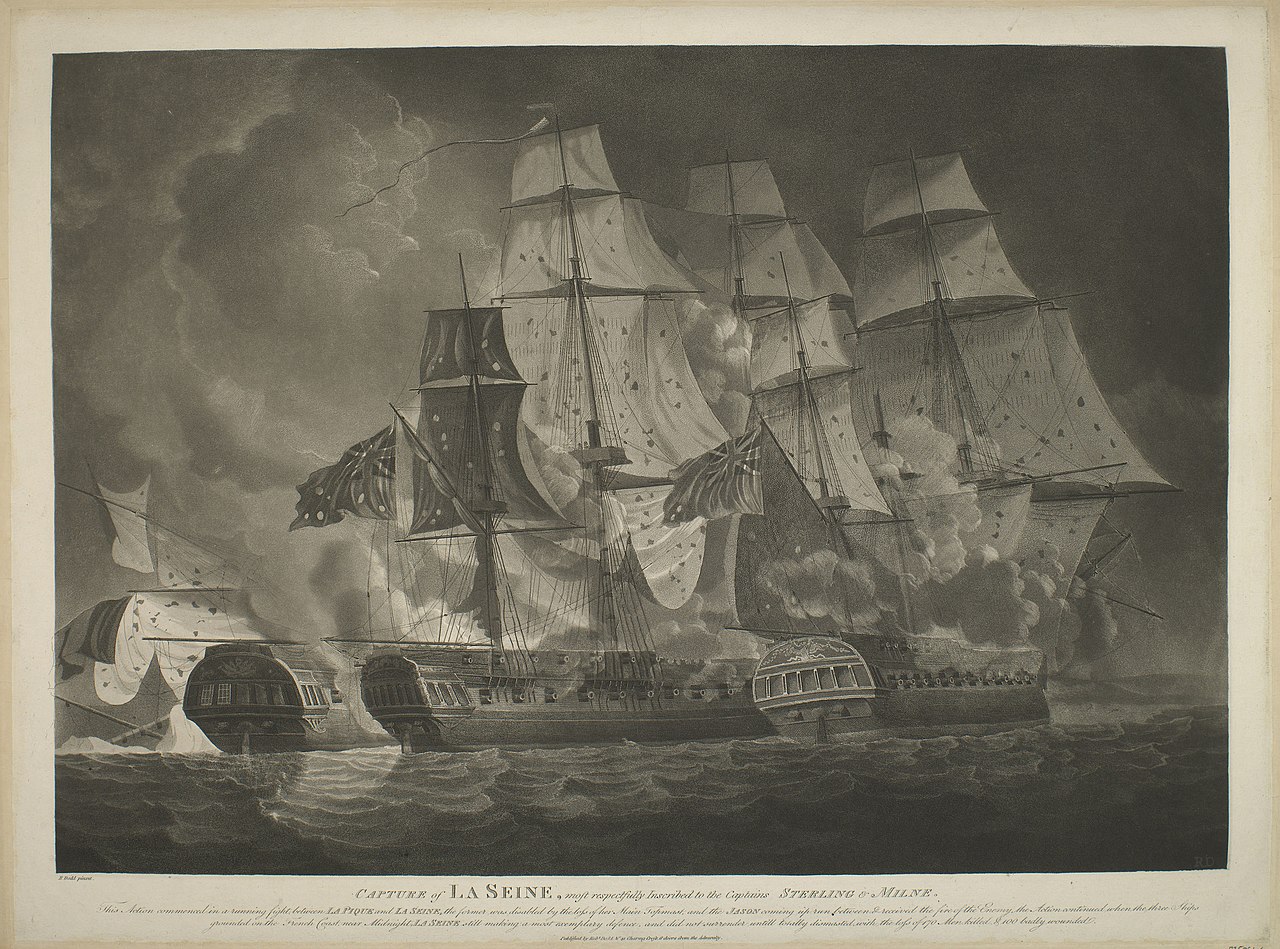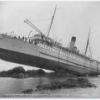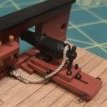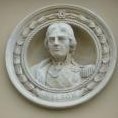-
Posts
2,245 -
Joined
-
Last visited
Reputation Activity
-
 Beef Wellington got a reaction from Kevin in HMS Jason by Beef Wellington - Caldercraft - 1:64 - Artois-class frigate modified from HMS Diana 1794
Beef Wellington got a reaction from Kevin in HMS Jason by Beef Wellington - Caldercraft - 1:64 - Artois-class frigate modified from HMS Diana 1794
Thanks everyone for continued interest, kind comments.and likes...
Block Stropping:
I've started stropping blocks for the hauling tackles. I'm opting for a double-single block combination, although I've read that doubles were only used on 32lb'ers. What I think this really means is that the tackle consisted of 2 double blocks. For a mid-range 18lb'er, a double-single seems appropriate and makes engineering sense.
This seems yet another painfully slow repetitive process! With this progressing in the background, will be intersperse with other sundry items. Whilst not too difficult once the approach has been proven, clumsiness never quite seems to diminish. Overall, happy with the way these turned out which is really testament to the fantastic blocks that Syren produces. The picture below is the result of 3 solid evenings work....sufficient for the waist guns.
Hooks were threaded with 0.3mm Syren line, and secured using 4 alternating overhand loops using tan Uni-thread (barely visible given its so close in color, but is what was also used for the breech rope seizing). For the 1/8" double block, the strop was twisted through 90 degrees while securing to ensure the appropriate alignment with the block. GS-Hypo was applied and left to dry before trimming off excess Uni-thread Line held in position around the block and then secured with a simple overhand loop Dilute PVA applied to the overhand loop and the stropping around the block. Was very liberal with this as it is not visible when dry, and anything that provides additional security seems silly to ignore. Trim excess stropping line once PVA has dried
Waist Beams:
First off, a correction needed to be made to the interior bulkhead to correct the position of the beam at the front of the main mast. The position of these had been taken literally from the plans very early in the build and it was clear that they are not in the appropriate position relative to the mainmast.
Secondly, needed to finally decide how to deal with the supplied walnut beams. These have a pretty rough grain and require a lot of cleanup to get nice smooth curves after removing from the sheet. Following the scheme shown on the contemporary models (painted red with upper natural face of boxwood), thin strips of overwide boxwood strips were liberally glued to the top of the beam, gradually sanded back and painted when flush. The lamination is virtually undetectable, and it also helps ensure the walnut grain is minimised. Filler can be used in any stubborn imperfections. Although a bit of a cheat, I just couldn't face cutting my own from box, and quite honestly, I doubt I could get satisfactory results with tools at my disposal.
Sub-Deck alterations:
Increasing the thickness of the beams also has the benefit that the top of the beams are flush with the sub-deck. Hoping this means that the gang boards can now be planked with the sub-deck providing a solid base, but remaining invisible from normal viewing angles. Slots were cut into the sub-deck to accommodate the laminated top surface. Picture hopefully self explanatory.
In position, the next required adjustment is revealed. The waist opening in the sub-deck has perfectly parallel sides. After studying various deck plans, it appears more appropriate for the gangboards to follow the line of hull (i.e. planks are constant width throughout their length). The approximate width of the gang boards were estimated from the AOTS plans and transferred to the deck. The hashed area indicates what will need to be remove. In actuality, more will be removed to set it back from the actual edge of the planking proper.
Back to stropping more blocks....
-
 Beef Wellington got a reaction from davyboy in HMS Jason by Beef Wellington - Caldercraft - 1:64 - Artois-class frigate modified from HMS Diana 1794
Beef Wellington got a reaction from davyboy in HMS Jason by Beef Wellington - Caldercraft - 1:64 - Artois-class frigate modified from HMS Diana 1794
Thanks everyone for continued interest, kind comments.and likes...
Block Stropping:
I've started stropping blocks for the hauling tackles. I'm opting for a double-single block combination, although I've read that doubles were only used on 32lb'ers. What I think this really means is that the tackle consisted of 2 double blocks. For a mid-range 18lb'er, a double-single seems appropriate and makes engineering sense.
This seems yet another painfully slow repetitive process! With this progressing in the background, will be intersperse with other sundry items. Whilst not too difficult once the approach has been proven, clumsiness never quite seems to diminish. Overall, happy with the way these turned out which is really testament to the fantastic blocks that Syren produces. The picture below is the result of 3 solid evenings work....sufficient for the waist guns.
Hooks were threaded with 0.3mm Syren line, and secured using 4 alternating overhand loops using tan Uni-thread (barely visible given its so close in color, but is what was also used for the breech rope seizing). For the 1/8" double block, the strop was twisted through 90 degrees while securing to ensure the appropriate alignment with the block. GS-Hypo was applied and left to dry before trimming off excess Uni-thread Line held in position around the block and then secured with a simple overhand loop Dilute PVA applied to the overhand loop and the stropping around the block. Was very liberal with this as it is not visible when dry, and anything that provides additional security seems silly to ignore. Trim excess stropping line once PVA has dried
Waist Beams:
First off, a correction needed to be made to the interior bulkhead to correct the position of the beam at the front of the main mast. The position of these had been taken literally from the plans very early in the build and it was clear that they are not in the appropriate position relative to the mainmast.
Secondly, needed to finally decide how to deal with the supplied walnut beams. These have a pretty rough grain and require a lot of cleanup to get nice smooth curves after removing from the sheet. Following the scheme shown on the contemporary models (painted red with upper natural face of boxwood), thin strips of overwide boxwood strips were liberally glued to the top of the beam, gradually sanded back and painted when flush. The lamination is virtually undetectable, and it also helps ensure the walnut grain is minimised. Filler can be used in any stubborn imperfections. Although a bit of a cheat, I just couldn't face cutting my own from box, and quite honestly, I doubt I could get satisfactory results with tools at my disposal.
Sub-Deck alterations:
Increasing the thickness of the beams also has the benefit that the top of the beams are flush with the sub-deck. Hoping this means that the gang boards can now be planked with the sub-deck providing a solid base, but remaining invisible from normal viewing angles. Slots were cut into the sub-deck to accommodate the laminated top surface. Picture hopefully self explanatory.
In position, the next required adjustment is revealed. The waist opening in the sub-deck has perfectly parallel sides. After studying various deck plans, it appears more appropriate for the gangboards to follow the line of hull (i.e. planks are constant width throughout their length). The approximate width of the gang boards were estimated from the AOTS plans and transferred to the deck. The hashed area indicates what will need to be remove. In actuality, more will be removed to set it back from the actual edge of the planking proper.
Back to stropping more blocks....
-
 Beef Wellington got a reaction from Mirabell61 in HMS Jason by Beef Wellington - Caldercraft - 1:64 - Artois-class frigate modified from HMS Diana 1794
Beef Wellington got a reaction from Mirabell61 in HMS Jason by Beef Wellington - Caldercraft - 1:64 - Artois-class frigate modified from HMS Diana 1794
OC, Carl, Rob, Thomas, Mike, Dave, Pat and all the likes...definitely helps keeping one moving forward!
Finally, have all the guns in position an the breeching ropes in place. Amazingly time consuming, no more need be said, and glad its behind me. I did allow myself the small concession of using a ringbolt for the less visible guns, and went with a ringbolt and ring for those visible in the waist area. Despite the latter being more 'correct', the jury is still out on whether the results totally warrant it at this scale as the eyebolts only version seems acceptable to my eye (comparison photo below). As usual, dilute PVA was used to help keep the breech ropes in position and to try give them a sense of weight. Photos seem to call attention to all the little dings and dents that seem unavoidable and thankfully not really noticeable during normal viewing.
A very simple jig was used to help keep lengths consistent. When using rings, I found that opening up a ringbolt using a small metal point and reclosing was easier, faster and predictable than opening up the ring itself.
-
 Beef Wellington got a reaction from schooner in HMS Jason by Beef Wellington - Caldercraft - 1:64 - Artois-class frigate modified from HMS Diana 1794
Beef Wellington got a reaction from schooner in HMS Jason by Beef Wellington - Caldercraft - 1:64 - Artois-class frigate modified from HMS Diana 1794
Thanks everyone for continued interest, kind comments.and likes...
Block Stropping:
I've started stropping blocks for the hauling tackles. I'm opting for a double-single block combination, although I've read that doubles were only used on 32lb'ers. What I think this really means is that the tackle consisted of 2 double blocks. For a mid-range 18lb'er, a double-single seems appropriate and makes engineering sense.
This seems yet another painfully slow repetitive process! With this progressing in the background, will be intersperse with other sundry items. Whilst not too difficult once the approach has been proven, clumsiness never quite seems to diminish. Overall, happy with the way these turned out which is really testament to the fantastic blocks that Syren produces. The picture below is the result of 3 solid evenings work....sufficient for the waist guns.
Hooks were threaded with 0.3mm Syren line, and secured using 4 alternating overhand loops using tan Uni-thread (barely visible given its so close in color, but is what was also used for the breech rope seizing). For the 1/8" double block, the strop was twisted through 90 degrees while securing to ensure the appropriate alignment with the block. GS-Hypo was applied and left to dry before trimming off excess Uni-thread Line held in position around the block and then secured with a simple overhand loop Dilute PVA applied to the overhand loop and the stropping around the block. Was very liberal with this as it is not visible when dry, and anything that provides additional security seems silly to ignore. Trim excess stropping line once PVA has dried
Waist Beams:
First off, a correction needed to be made to the interior bulkhead to correct the position of the beam at the front of the main mast. The position of these had been taken literally from the plans very early in the build and it was clear that they are not in the appropriate position relative to the mainmast.
Secondly, needed to finally decide how to deal with the supplied walnut beams. These have a pretty rough grain and require a lot of cleanup to get nice smooth curves after removing from the sheet. Following the scheme shown on the contemporary models (painted red with upper natural face of boxwood), thin strips of overwide boxwood strips were liberally glued to the top of the beam, gradually sanded back and painted when flush. The lamination is virtually undetectable, and it also helps ensure the walnut grain is minimised. Filler can be used in any stubborn imperfections. Although a bit of a cheat, I just couldn't face cutting my own from box, and quite honestly, I doubt I could get satisfactory results with tools at my disposal.
Sub-Deck alterations:
Increasing the thickness of the beams also has the benefit that the top of the beams are flush with the sub-deck. Hoping this means that the gang boards can now be planked with the sub-deck providing a solid base, but remaining invisible from normal viewing angles. Slots were cut into the sub-deck to accommodate the laminated top surface. Picture hopefully self explanatory.
In position, the next required adjustment is revealed. The waist opening in the sub-deck has perfectly parallel sides. After studying various deck plans, it appears more appropriate for the gangboards to follow the line of hull (i.e. planks are constant width throughout their length). The approximate width of the gang boards were estimated from the AOTS plans and transferred to the deck. The hashed area indicates what will need to be remove. In actuality, more will be removed to set it back from the actual edge of the planking proper.
Back to stropping more blocks....
-
 Beef Wellington got a reaction from gerty in HMS Jason by Beef Wellington - Caldercraft - 1:64 - Artois-class frigate modified from HMS Diana 1794
Beef Wellington got a reaction from gerty in HMS Jason by Beef Wellington - Caldercraft - 1:64 - Artois-class frigate modified from HMS Diana 1794
Thanks everyone for continued interest, kind comments.and likes...
Block Stropping:
I've started stropping blocks for the hauling tackles. I'm opting for a double-single block combination, although I've read that doubles were only used on 32lb'ers. What I think this really means is that the tackle consisted of 2 double blocks. For a mid-range 18lb'er, a double-single seems appropriate and makes engineering sense.
This seems yet another painfully slow repetitive process! With this progressing in the background, will be intersperse with other sundry items. Whilst not too difficult once the approach has been proven, clumsiness never quite seems to diminish. Overall, happy with the way these turned out which is really testament to the fantastic blocks that Syren produces. The picture below is the result of 3 solid evenings work....sufficient for the waist guns.
Hooks were threaded with 0.3mm Syren line, and secured using 4 alternating overhand loops using tan Uni-thread (barely visible given its so close in color, but is what was also used for the breech rope seizing). For the 1/8" double block, the strop was twisted through 90 degrees while securing to ensure the appropriate alignment with the block. GS-Hypo was applied and left to dry before trimming off excess Uni-thread Line held in position around the block and then secured with a simple overhand loop Dilute PVA applied to the overhand loop and the stropping around the block. Was very liberal with this as it is not visible when dry, and anything that provides additional security seems silly to ignore. Trim excess stropping line once PVA has dried
Waist Beams:
First off, a correction needed to be made to the interior bulkhead to correct the position of the beam at the front of the main mast. The position of these had been taken literally from the plans very early in the build and it was clear that they are not in the appropriate position relative to the mainmast.
Secondly, needed to finally decide how to deal with the supplied walnut beams. These have a pretty rough grain and require a lot of cleanup to get nice smooth curves after removing from the sheet. Following the scheme shown on the contemporary models (painted red with upper natural face of boxwood), thin strips of overwide boxwood strips were liberally glued to the top of the beam, gradually sanded back and painted when flush. The lamination is virtually undetectable, and it also helps ensure the walnut grain is minimised. Filler can be used in any stubborn imperfections. Although a bit of a cheat, I just couldn't face cutting my own from box, and quite honestly, I doubt I could get satisfactory results with tools at my disposal.
Sub-Deck alterations:
Increasing the thickness of the beams also has the benefit that the top of the beams are flush with the sub-deck. Hoping this means that the gang boards can now be planked with the sub-deck providing a solid base, but remaining invisible from normal viewing angles. Slots were cut into the sub-deck to accommodate the laminated top surface. Picture hopefully self explanatory.
In position, the next required adjustment is revealed. The waist opening in the sub-deck has perfectly parallel sides. After studying various deck plans, it appears more appropriate for the gangboards to follow the line of hull (i.e. planks are constant width throughout their length). The approximate width of the gang boards were estimated from the AOTS plans and transferred to the deck. The hashed area indicates what will need to be remove. In actuality, more will be removed to set it back from the actual edge of the planking proper.
Back to stropping more blocks....
-
 Beef Wellington got a reaction from BenD in HMS Jason by Beef Wellington - Caldercraft - 1:64 - Artois-class frigate modified from HMS Diana 1794
Beef Wellington got a reaction from BenD in HMS Jason by Beef Wellington - Caldercraft - 1:64 - Artois-class frigate modified from HMS Diana 1794
Thanks everyone for continued interest, kind comments.and likes...
Block Stropping:
I've started stropping blocks for the hauling tackles. I'm opting for a double-single block combination, although I've read that doubles were only used on 32lb'ers. What I think this really means is that the tackle consisted of 2 double blocks. For a mid-range 18lb'er, a double-single seems appropriate and makes engineering sense.
This seems yet another painfully slow repetitive process! With this progressing in the background, will be intersperse with other sundry items. Whilst not too difficult once the approach has been proven, clumsiness never quite seems to diminish. Overall, happy with the way these turned out which is really testament to the fantastic blocks that Syren produces. The picture below is the result of 3 solid evenings work....sufficient for the waist guns.
Hooks were threaded with 0.3mm Syren line, and secured using 4 alternating overhand loops using tan Uni-thread (barely visible given its so close in color, but is what was also used for the breech rope seizing). For the 1/8" double block, the strop was twisted through 90 degrees while securing to ensure the appropriate alignment with the block. GS-Hypo was applied and left to dry before trimming off excess Uni-thread Line held in position around the block and then secured with a simple overhand loop Dilute PVA applied to the overhand loop and the stropping around the block. Was very liberal with this as it is not visible when dry, and anything that provides additional security seems silly to ignore. Trim excess stropping line once PVA has dried
Waist Beams:
First off, a correction needed to be made to the interior bulkhead to correct the position of the beam at the front of the main mast. The position of these had been taken literally from the plans very early in the build and it was clear that they are not in the appropriate position relative to the mainmast.
Secondly, needed to finally decide how to deal with the supplied walnut beams. These have a pretty rough grain and require a lot of cleanup to get nice smooth curves after removing from the sheet. Following the scheme shown on the contemporary models (painted red with upper natural face of boxwood), thin strips of overwide boxwood strips were liberally glued to the top of the beam, gradually sanded back and painted when flush. The lamination is virtually undetectable, and it also helps ensure the walnut grain is minimised. Filler can be used in any stubborn imperfections. Although a bit of a cheat, I just couldn't face cutting my own from box, and quite honestly, I doubt I could get satisfactory results with tools at my disposal.
Sub-Deck alterations:
Increasing the thickness of the beams also has the benefit that the top of the beams are flush with the sub-deck. Hoping this means that the gang boards can now be planked with the sub-deck providing a solid base, but remaining invisible from normal viewing angles. Slots were cut into the sub-deck to accommodate the laminated top surface. Picture hopefully self explanatory.
In position, the next required adjustment is revealed. The waist opening in the sub-deck has perfectly parallel sides. After studying various deck plans, it appears more appropriate for the gangboards to follow the line of hull (i.e. planks are constant width throughout their length). The approximate width of the gang boards were estimated from the AOTS plans and transferred to the deck. The hashed area indicates what will need to be remove. In actuality, more will be removed to set it back from the actual edge of the planking proper.
Back to stropping more blocks....
-
 Beef Wellington reacted to SimonV in Mercury by SimonV - Amati/Victory Models - Scale 1:64 - 99% scratchbuild
Beef Wellington reacted to SimonV in Mercury by SimonV - Amati/Victory Models - Scale 1:64 - 99% scratchbuild
Slow but steady progress on planking.
At first, I was in doubt and fear about how to carry out this process, but I must say that I enjoy it very much .
-
 Beef Wellington reacted to Gahm in HMS Jason by Beef Wellington - Caldercraft - 1:64 - Artois-class frigate modified from HMS Diana 1794
Beef Wellington reacted to Gahm in HMS Jason by Beef Wellington - Caldercraft - 1:64 - Artois-class frigate modified from HMS Diana 1794
Wonderful work, Jason! And your attention to detail is amazing. It is a rare treat to see this kind of detail on the trunnion mountings!
Thomas
-
 Beef Wellington reacted to SimonV in HMS Jason by Beef Wellington - Caldercraft - 1:64 - Artois-class frigate modified from HMS Diana 1794
Beef Wellington reacted to SimonV in HMS Jason by Beef Wellington - Caldercraft - 1:64 - Artois-class frigate modified from HMS Diana 1794
Stunning work Jason!
I really like your attention to details. Not to mention how good she looks fully armed !
-
 Beef Wellington reacted to jwvolz in HMS Jason by Beef Wellington - Caldercraft - 1:64 - Artois-class frigate modified from HMS Diana 1794
Beef Wellington reacted to jwvolz in HMS Jason by Beef Wellington - Caldercraft - 1:64 - Artois-class frigate modified from HMS Diana 1794
Excellent work Jason!
-
 Beef Wellington reacted to BANYAN in HMS Jason by Beef Wellington - Caldercraft - 1:64 - Artois-class frigate modified from HMS Diana 1794
Beef Wellington reacted to BANYAN in HMS Jason by Beef Wellington - Caldercraft - 1:64 - Artois-class frigate modified from HMS Diana 1794
That is seriously nice work Jason; she is looking good with her 'teeth' added.
cheers
Pat
-
 Beef Wellington reacted to Blue Ensign in HMS Jason by Beef Wellington - Caldercraft - 1:64 - Artois-class frigate modified from HMS Diana 1794
Beef Wellington reacted to Blue Ensign in HMS Jason by Beef Wellington - Caldercraft - 1:64 - Artois-class frigate modified from HMS Diana 1794
Very nice work on those guns Jason, I got off lightly having only a dozen on my little Cutter.
Love the natural drape you’ve achieved on the breeching ropes , and impressed that you went with the proper hitch for the ring bolt seizing.
Your little jig for rope length will prove useful for me in the very near future.
B.E.
-
 Beef Wellington got a reaction from Kevin in HMS Jason by Beef Wellington - Caldercraft - 1:64 - Artois-class frigate modified from HMS Diana 1794
Beef Wellington got a reaction from Kevin in HMS Jason by Beef Wellington - Caldercraft - 1:64 - Artois-class frigate modified from HMS Diana 1794
OC, Carl, Rob, Thomas, Mike, Dave, Pat and all the likes...definitely helps keeping one moving forward!
Finally, have all the guns in position an the breeching ropes in place. Amazingly time consuming, no more need be said, and glad its behind me. I did allow myself the small concession of using a ringbolt for the less visible guns, and went with a ringbolt and ring for those visible in the waist area. Despite the latter being more 'correct', the jury is still out on whether the results totally warrant it at this scale as the eyebolts only version seems acceptable to my eye (comparison photo below). As usual, dilute PVA was used to help keep the breech ropes in position and to try give them a sense of weight. Photos seem to call attention to all the little dings and dents that seem unavoidable and thankfully not really noticeable during normal viewing.
A very simple jig was used to help keep lengths consistent. When using rings, I found that opening up a ringbolt using a small metal point and reclosing was easier, faster and predictable than opening up the ring itself.
-
 Beef Wellington reacted to Blue Ensign in HM Cutter Cheerful 1806 by Blue Ensign - FINISHED - Syren Ship Model Company - 1:48 scale
Beef Wellington reacted to Blue Ensign in HM Cutter Cheerful 1806 by Blue Ensign - FINISHED - Syren Ship Model Company - 1:48 scale
I think you're right Dowmer, having pre-made the hatch surrounds to the plans as I thought, I obviously didn't take the round down sufficiently to the deck level, and then forgot all about it as I moved onto other stuff.
Thanks for the heads up, we need more members to point things out that puzzle them or don't seem right to help keep us on track.
B.E.
-
 Beef Wellington reacted to Dowmer in HM Cutter Cheerful 1806 by Blue Ensign - FINISHED - Syren Ship Model Company - 1:48 scale
Beef Wellington reacted to Dowmer in HM Cutter Cheerful 1806 by Blue Ensign - FINISHED - Syren Ship Model Company - 1:48 scale
B.E.
I have a question that has been nagging at me. In one of your previous pictures of your hatch coamings it shows the edge square with the top rounded off.
I always thought the edges were rounded down to the deck to prevent nasty ankle injuries etc. Here’s a picture of what I mean.
Are there other ways to model them?
I’m certainly no expert, and I don’t mean to be critical, but I’m always looking for accurate or contemporary ways of construction.
Thanks
-
 Beef Wellington reacted to Blue Ensign in HM Cutter Cheerful 1806 by Blue Ensign - FINISHED - Syren Ship Model Company - 1:48 scale
Beef Wellington reacted to Blue Ensign in HM Cutter Cheerful 1806 by Blue Ensign - FINISHED - Syren Ship Model Company - 1:48 scale
Post 64
Mast Coat
This is the last deck fitting I need to make.
Have been thinking about it for a while and I didn't fancy trying to drill and shape this boxwood ring by hand.
So for this little exercise I got the mill out.
5735
I also brought into use the Dividing head to remove the centre.
5736
The beauty of this tool is that it can be used in either the horizontal or vertical plane.
5737
This gives a clue as to the donor for the mast coat.
5739
Shaping the rim is the final operation.
5741
Not for the first time an old Boxwood chess piece has provided the makings.
5746
5755
5754
A little more tidying up and another milestone sort of reached.
5760
Meanwhile the precious little boxes of fittings delight await their turn.
That about does it for the present, now returning outboard.
B.E.
01/02/2019
-
 Beef Wellington reacted to jim_smits in HMS Hood by jim_smits - Hachette - 1:200 - part works
Beef Wellington reacted to jim_smits in HMS Hood by jim_smits - Hachette - 1:200 - part works
No avalanches in my garden I’ll have you know. Proper engineering there....!
Still alive but busy with work, the munchkin and Christmas period.
-
 Beef Wellington reacted to toms10 in HMS Leopard by toms10 - FINISHED - 1:85 scale POF/POB
Beef Wellington reacted to toms10 in HMS Leopard by toms10 - FINISHED - 1:85 scale POF/POB
Hello all. I hope everyone who celebrated the Thanksgiving holiday enjoyed themselves.
Got a little more done over the Thanksgiving holiday weekend. The quarter deck and gang boards are in place. Now I am making the 6 pounder canons and carriages.
Tom
Just noticed that I left a couple of temporary supports under the starboard gang boards when I took the pic. Oops. Also not to happy with the gap in the center of the deck boards. Sticks out like a sore thumb in the picture. Luckily that area will be covered by the forecastle deck so it will not be that obvious. I may just put a bit of filler in there to help conceal it anyway.
-
 Beef Wellington reacted to toms10 in HMS Leopard by toms10 - FINISHED - 1:85 scale POF/POB
Beef Wellington reacted to toms10 in HMS Leopard by toms10 - FINISHED - 1:85 scale POF/POB
Got the upper deck cannons mounted and rigged.
Now I will go back and work on the quarter deck and see how that will fit up with this deck.
Tom
-
 Beef Wellington reacted to rafine in Prince de Neufchatel by rafine - FINISHED - Model Shipways - 1:64
Beef Wellington reacted to rafine in Prince de Neufchatel by rafine - FINISHED - Model Shipways - 1:64
Work on yards and rigging continues. I have now made and added the fore royal and topgallant yards and the gaff. The rigging is comparable to the same yards previously done on the mainmast. I have added the braces from both of the topgallant yards. All of the lines have been temporarily tied off, pending the completion of the fore mast yards and rigging.
Next, and last, will be the fore lower and topsail yards.
Bob
-
 Beef Wellington reacted to SimonV in Mercury by SimonV - Amati/Victory Models - Scale 1:64 - 99% scratchbuild
Beef Wellington reacted to SimonV in Mercury by SimonV - Amati/Victory Models - Scale 1:64 - 99% scratchbuild
Thank you Jason , and others for likes. Very appreciate it .
Regarding planking. Each plank is made individually to achieve difference in tone and grain direction. Due to this I prepared short sheets of castello boxwood instead of one single long piece. It is time consuming work but I think it is worth it.
-
 Beef Wellington got a reaction from Canute in HMS Bellona by harlequin - FINISHED - Corel
Beef Wellington got a reaction from Canute in HMS Bellona by harlequin - FINISHED - Corel
You have a lovely ship going together here Harlequin, as others have said the wood tones are very pleasing and you've done well to make some of the lesser quality fitting really blend in. Will be following from here on if I may...
-
 Beef Wellington got a reaction from Shipyard sid in HMS Jason by Beef Wellington - Caldercraft - 1:64 - Artois-class frigate modified from HMS Diana 1794
Beef Wellington got a reaction from Shipyard sid in HMS Jason by Beef Wellington - Caldercraft - 1:64 - Artois-class frigate modified from HMS Diana 1794
OC, Carl, Rob, Thomas, Mike, Dave, Pat and all the likes...definitely helps keeping one moving forward!
Finally, have all the guns in position an the breeching ropes in place. Amazingly time consuming, no more need be said, and glad its behind me. I did allow myself the small concession of using a ringbolt for the less visible guns, and went with a ringbolt and ring for those visible in the waist area. Despite the latter being more 'correct', the jury is still out on whether the results totally warrant it at this scale as the eyebolts only version seems acceptable to my eye (comparison photo below). As usual, dilute PVA was used to help keep the breech ropes in position and to try give them a sense of weight. Photos seem to call attention to all the little dings and dents that seem unavoidable and thankfully not really noticeable during normal viewing.
A very simple jig was used to help keep lengths consistent. When using rings, I found that opening up a ringbolt using a small metal point and reclosing was easier, faster and predictable than opening up the ring itself.
-
 Beef Wellington reacted to Gaetan Bordeleau in 74-gun ship by Gaetan Bordeleau - 1:24
Beef Wellington reacted to Gaetan Bordeleau in 74-gun ship by Gaetan Bordeleau - 1:24
Installation of reinforcement pieces. The easy way to assure parallelism between each one is to set a spacer.
2 of these have a double use: they will also receive the planking of the false and first deck.
Deck beams of the first deck will rest on a large plank on each side of the boat. Each frame will have 1 notch each side to sit them. The first deck is the one withe the greater span. For this reason, some of the frames will be made in 3 parts with taper notches. This is a great method to assemble beams. Probably with the weight of the parts only, it would be enough to fix the parts of the beam. I remember the first time I tried it, I was surprise how strong locking this mechanism is able to perform; the same way as a taper sleeve but because the parts are assembled in an arc additional lateral strengths comes to lock even in a stronger way the assembly.
Depending also from the needs, there will be beams from 1 part, example the first 2 in front. beams made from 2 parts will also be include in the first deck depending of the needs.
With the fabrication of the camera studio stand, it will be easy to insert a full frame camera inside. One of the advantage is that it is easy to set the camera parallel to the model. I will try to give access as much as possible inside. For this reason, deck and wall planking will be install only in essential circumstances. In a way there will be as less as possible longitudinal planks but more perpendicularly to the keel.
Parts are temporary fix until all the notches to receive the beams of the first deck are done.
I got an answer from Lee Valley and Veritas for the detail knife. Here is a part of the last paragraph: ''We also have some other design we are working on. In order to avoid any conflict your product submission will not be reviewed by our designers. SO, I can only hope they can produce a sharp knife with their wood plane blade. While this time, when I will want to have a sharper knife, I will regrind one of those blade in a V shape or may be I could do a knife blade from a half wood plane blade.
-
 Beef Wellington reacted to paulsutcliffe in HMS Sirius 1797 by paulsutcliffe - 1:48 - POF from NMM plans
Beef Wellington reacted to paulsutcliffe in HMS Sirius 1797 by paulsutcliffe - 1:48 - POF from NMM plans
current state of play, there are some really interesting and awkward angles and curves in this area
the piece of tinfoil is representing the lead covering for the lancing piece, not sure if I will be adding this piece or I might try and make it out of copper foil, chase port has been cut out on this side with gents saw and I now need to file sand the sill level
regards
Paul







